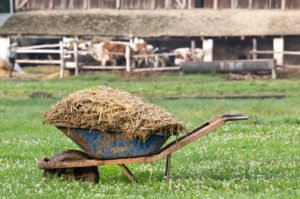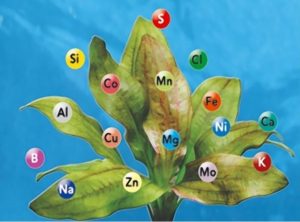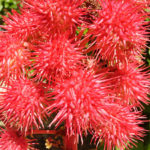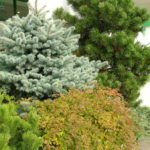In this article I will tell you about fertilizers. What can be fertilizer.
Mineral fertilizer
All nutrients from the soil of the plant can be absorbed only in the form of an aqueous solution. Therefore, many people prefer to use liquid complex fertilizers: they rather penetrate to the roots and, of course, faster absorbed by plants.

Pay attention to the choice of complex mineral fertilizers. There are many special compositions: for lawn, ornamental and berry shrubs, perennials, fruit trees, conifers. Naturally, under coniferous it is better to bring the compositions prepared specially for them, and, for example, hosts – to feed fertilizers for perennials. In such mixtures, the mineral composition is optimally balanced, and the plants will receive everything necessary for full development and growth.
What else you need to consider: fertilizers introduced in the autumn, should be with a minimum content of nitrogen;. In these mineral mixtures there is almost no nitrogen, and there are phosphorus, potassium, calcium – trace elements necessary for aging shoots, strengthen plant immunity, increase resistance to low temperatures. Information about the rate of fertilizer application can also be found on the package. It should not be exceeded: it is better to underfeed than overfeed.
Organic fertilizer
Many gardeners and gardeners prefer to feed plants exclusively with organic matter.

Let’s see what and how much you can make, what benefits will bring a particular type of organic fertilizer.
Manure and droppings
A very valuable fertilizer, responsible for the fertility of the soil. Fresh manure or bird droppings are embedded in the soil when digging – directly under the plants they can not be made, you can burn the roots. Manure application rate: from 300 to 400 kg per 100 ml with an interval of 2-3 years.
Ash
A whole list of valuable microelements for plants contains ash obtained from the burning of weeds, tops, branches. On 1 m2 spend up to 1 kg of ash. As well as manure, it is brought under autumn digging once in 3-4 years. Very good to such feeding include cabbage, potatoes, strawberries, raspberries, currants.
Peat
Riding peat contains a lot of organic substances, has a high degree of moisture capacity. But keep in mind the low content of nutrients and high acidity. In lowland peat neutral or slightly acid reaction. The level of nutrients in it is higher than in the upper, but organic substances are much less. Both types of peat are the most rational to use as a component of compost.
Compost
No wonder the farmers gave it a second name – “black gold”. The introduction of Mature compost will provide the soil with long-term fertility. The approximate rate-3-4 kg per 1 m2.
Sawdust (chopped grass, small branches, tree bark)
Fresh sawdust (or their analogues), of course not fertilizer. But their introduction is still justified: they loosen the dense soil, retain moisture on the sand. Gradually decomposing, sawdust turns into humus and serves as food for soil microorganisms, fungi and worms –creators of humus.
What fertilizers to make in the fall-you decide. The choice depends on the characteristics of the soil on the site, and the practiced method of agriculture. It is only important that this process be regular, constant. Otherwise, soon the soil will become poor, and count on rich harvests do not have to.






